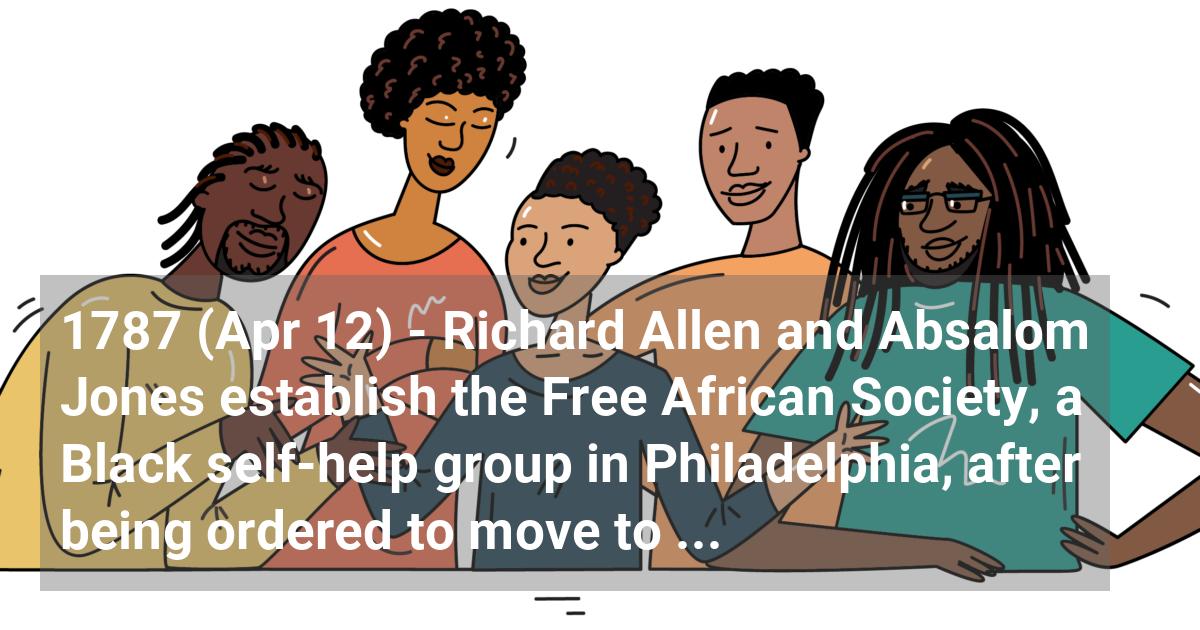Home / Full timeline / Richard Allen and Absalom Jones establish the Free African Society, a Black self-help group in Philadelphia, after being ordered to move to a designated worship area for Blacks at a local Church.
 Richard Allen and Absalom Jones establish the Free African Society, a Black self-help group in Philadelphia, after being ordered to move to a designated worship area for Blacks at a local Church.
Richard Allen and Absalom Jones establish the Free African Society, a Black self-help group in Philadelphia, after being ordered to move to a designated worship area for Blacks at a local Church.
1787 (Apr 12)
Richard Allen and Absalom Jones organized the Free African society, a Black self-help group, in Philadelphia. Allen was perhaps the most conspicuous Black leader in the country before the rise of Frederick Douglass. His stature rested upon his leadership in the establishment of such organizations as the Free African Society and the African Methodist Episcopal (A.M.E.) Church. Jones was an associate of Allen for many years, but the two parted when Jones, who was attracted by Anglicanism, became rector of the first Protestant Episcopal congregation for Blacks. Jones was born enslaved in Sussex, Delaware. His enslaver took him to Philadelphia to work as a handyman in a store where he was taught to write by one of the clerks. He later attended night school and completed his education. Saving money that visitors to his enslaver's house had given him, together with his earnings, Jones purchased both his own freedom and that of his wife. He became a member of the St. George's Methodist Church in Philadelphia. While attending services there one Sunday in 1786, Jones, Allen, and other worshippers, were pulled from their knees and ordered to move to the reserved worship area for Blacks in the church's balcony. Out of this incident grew the Free African society, a quasi-religious organization whose programs included a fund for mutual aid, burial assistance, relief for widows and orphans, strengthening of marriage ties and personal morality, cooperation with abolition societies, and correspondence with free Blacks in other areas. It was probably the first stable, independent Black social organization in the United States. Among the other joint efforts of Allen and Jones were the organization of relief measures for the Black population in Philadelphia during the yellow-fever epidemic in 1793, and the raising of a company of Black militia during the War of 1812.
References:
- • Hornsby, Alton. Chronology of African-American History: Significant Events and People from 1619 to the Present. Detroit: Gale Research, 1995.
